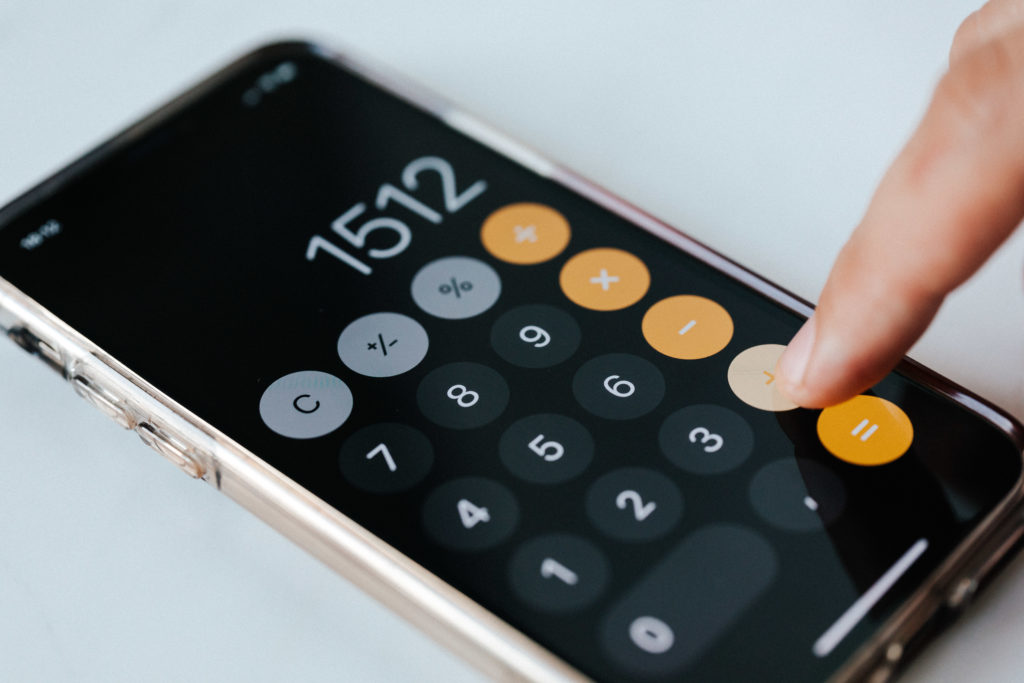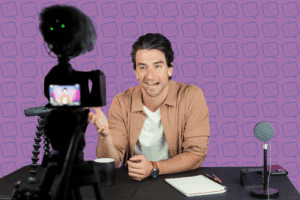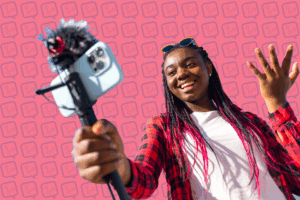Affiliate Marketing for Influencers and Content Creators

Affiliate Marketing is an effective way for influencers and content creators to earn an income. This is because being an influencer and a content creator is like being an entrepreneur. If you’re an influencer or creator, you’re out in the world trying to “make it” often by creating content that either entertains an audience, educates them on something specific that you’ve mastered, and great creators can do both entertaining and educating at the same time. And like any entrepreneurial endeavor, the magic happens when the creator figures out how to add value to his or her “customer” in order to charge a fee or earn compensation in exchange for their value. This is no different for influencers and content creators, and affiliate marketing, or “performance marketing” can be one of the most effective and scalable ways to earn an income.
Table of Contents:
- What is Affiliate Marketing?
- How Does Affiliate Marketing Work
- When Does Affiliate Marketing Work Best?
- How is Affiliate Marketing Different from Traditional Advertising?
- Do Brands Like Affiliate Marketing?
- Where Do Influencers and Creators Find Affiliate Marketing Opportunities?
What is Affiliate Marketing?
Affiliate marketing is when you get paid for driving specific sales for a brand partner or company. In an affiliate marketing model, you would do a promotion of a specific product and you would be compensated in proportion for the amount of product you sold. The amount of compensation is determined by the economics of the specific affiliate program and vary by company and brand. Some brands pay a small percentage of sales (like 10%), some pay a high percentage (like 70%), and some pay a flat rate per sale (like $100).
How Does Affiliate Marketing Work?
In the affiliate marketing model, everything is measured and tracked. Every sale is tracked through something called “Attribution Software.” At InfluenceLogic, our Creator Portal has sophisticated attribution software that helps our brand partners measure and monitor all of the performance from our creators and influencers so we can make sure we are paying our partners accordingly and quickly. There are many “affiliate networks” out there, like Commission Junction or Shareasale, but InfuenceLogic specializes in affiliate opportunities that are truly extraordinary opportunities for a few reasons:
- We partner with brands that have strong missions and are committed to making a difference. This is why lots of our programs are focused on the health and wellness vertical, though we also are sourcing partners in the financial literacy vertical and virtual education vertical.
- We partner with brands that have very competitive economics for their programs. We work with the brand to design the economics in a way that is truly win / win for our creators as well as the brand itself.
When Does Affiliate Marketing Work Best?
Affiliate marketing works best for content creators and influencers who are very passionate about a specific theme or topic, or they have mastered this topic, and then partnering with a relevant brand through their affiliate program. We call this “relevance” and “synergy” between the creator and the brand. When there is natural synergy, promoting a brand is less like a chore or an ad, but a relevant fit or endorsement. When the brand fits in with the content, it’s an easier watch for the audience, and economically, it tends to perform much better in terms of sales. So finding brands and affiliate programs that are relevant to the topics and themes you discuss is a very effective strategy.
Another strategy that many creators have is sharing affiliate links to products that they use themselves, through either the brand’s program or the Amazon affiliate program. For instance, if you use a Lumix GH5 to film all of your videos, why not let your audience know and link to it for them to consider purchasing? Companies like Kit have built their entire business model off of this strategy. Keep in mind, the affiliate commissions on programs like these are often very, very low. This is the primary reason we do not include opportunities like this at InfluenceLogic: Our focus is on brand opportunities that make a difference and have very competitive economics.
How is Affiliate Marketing Different from Traditional Advertising?
Traditional advertising and also much of influencer marketing is based on a different model than affiliate marketing. The model is usually based on “CPM,” or “cost per mille.” CPM is an advertising model that’s based on the size of a creator’s audience, the amount of reach they have, rather than the amount of impact they have on the brand’s bottom line. The CPM is typically a fixed dollar amount that is paid for each 1,000 impressions that the influencer or media property shows the brand’s advertisement or promotion. The dollar amount varies by brand, media channel, and can even vary dramatically by things like “time of year” and the number of advertisers vying for the specific advertising placement. The more competitive the environment, the higher the CPMs, and the more that influencers and creators will earn.
In some circumstances, this model can be better for either the creator and influencer, or it could actually be better for the brand itself. When you juxtapose this model with affiliate marketing, influencers and creators are not paid for driving sales, but they are paid for impressions.
For example, if you are a smaller creator who gets 5,000 views per YouTube video or 5,000 downloads per podcast, you would multiply the CPM by 5. So if the CPM is $20 (this can vary, but $20 is often considered high for YouTube and fair for podcasts), then you would be looking at a $100 payment for a promotion.
The challenge with this is that the CPM model does not do a good job connecting things like audience engagement, audience affinity, or a creator’s passion for the product or service into the compensation model. A creator might have an extremely engaged audience and those 5,000 views or downloads might be extremely valuable for the brand, but under the CPM model, the creator would not see any upside from that. They’d simply accept their $100 and that’s it. Whereas with affiliate marketing, if the creator identified the right brand that resonated with his or her audience and then partnered with them on a performance basis through their affiliate program, that creator has an opportunity to earn much, much higher compensation
Let’s do the same math we did with the CPM model, but run it through an affiliate marketing model. At 5,000 views and a $20 CPM, the creator would have been paid $100 for the video integration. But let’s say there was a tremendous affinity between the creator’s content, the audience, and the brand. Let’s say the creator partnered with a brand that paid $50 for each sale that came from the creator’s audience. And let’s say that 1% of the audience who heard the ad visited the website and 10% made a purchase (these are average numbers). 5,000 X .01 = 50 visits to the website. 50 X .1 = 5 purchases. With a price of $50 per sale, that generates $250 in in compensation for the creator, which is 2.5X higher than the CPM model.
While $250 versus $100 might not seem like too much, this can add up if the creator is releasing multiple videos or podcasts per week. At just 2 videos or podcasts per week, this difference adds up to almost $16,000 per year. This is very significant. More importantly, these numbers scale up with a creator’s growth, leaving considerable upside for the creator.
Do Brands Like Affiliate Marketing?
In the examples above, I outlined how creators and influencers can make more money by partnering with brands through their affiliate marketing model over the traditional CPM model. The creator made an average of 2.5X more compensation through the affiliate model, but you may be wondering how a brand would feel about this? One thing to consider here is that brands, especially as they mature into larger companies, want predictable growth and sales. When they manage CPM campaigns and marketing budgets, there is a lot of uncertainty in whether their advertising will perform. This can be dangerous as marketing teams in these companies are held accountable to performance and their compensation is often directly tied to how accurate they are with their goals, projections, and results.
With the affiliate marketing model, the marketing team sets their target “customer acquisition cost” which is reflected in the compensation structure of their affiliate program. If the marketing team’s marching orders is to acquire new customers at a cost of $50, then they will make this clear in their affiliate program compensation structure. This way, any customer they acquire at $50 hits their goals and is of no risk for them. The marketing team has considerable managed their risk with this type of program and it is in their interest to scale this program as much as they can. In other words, brands like affiliate marketing and some brands prefer this model to others. So when a creator succeeds and drives lots of sales and compensation, the brand cheers and is very excited.
Where Do Influencers and Creators Find Affiliate Marketing Opportunities?
At InfluenceLogic, our mission is to source the best affiliate marketing opportunities for creators and influencers possible, and provide education, wisdom and other techniques to help our creators succeed when promoting. You can fill out an application to join InfluenceLogic as a partner here.
A second benefit of partnering with InfluenceLogic are what we call our “CSPs” or Creator Success Professionals. Our CSPs are team members who focus entirely on helping creators and influencers monetize their content and increase their income earnings. When you join InfluenceLogic, you will have a CSP assigned to your account and be available to help you find the right affiliate programs, brand opportunities, and even revenue opportunities in your previously posted content that you may never have known existed.
InfluenceLogic is not the only company out there like this, but we are the only company focused on creators and influencers and the only company who takes the amount of time to get to know creators as people and partners.
As I described first in this article, the creator and influencer movement is an evolution of entrepreneurship. The entrepreneurial journey is filled with ups and downs, and higher ups and lower downs. It is a marathon. It can take a decade to come together fully. But it is a journey 100% worth taking and you can consider InfluenceLogic a core partner of yours on this journey!






